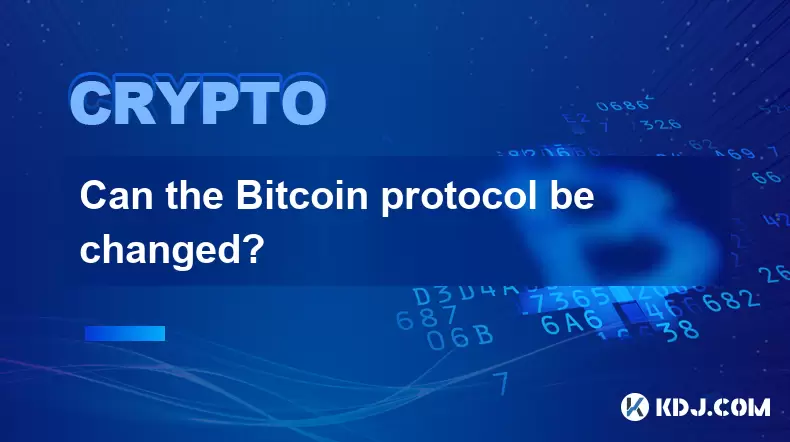-
 Bitcoin
Bitcoin $112600
0.72% -
 Ethereum
Ethereum $4350
1.12% -
 XRP
XRP $3.006
2.43% -
 Tether USDt
Tether USDt $0.0000
-0.01% -
 BNB
BNB $881.9
0.64% -
 Solana
Solana $217.3
1.76% -
 USDC
USDC $0.9997
-0.02% -
 Dogecoin
Dogecoin $0.2414
3.76% -
 TRON
TRON $0.3374
1.39% -
 Cardano
Cardano $0.8848
4.19% -
 Hyperliquid
Hyperliquid $54.57
8.24% -
 Chainlink
Chainlink $23.63
3.34% -
 Ethena USDe
Ethena USDe $1.001
0.06% -
 Sui
Sui $3.584
3.81% -
 Stellar
Stellar $0.3823
4.07% -
 Bitcoin Cash
Bitcoin Cash $583.8
-1.71% -
 Avalanche
Avalanche $26.00
3.57% -
 Hedera
Hedera $0.2326
4.80% -
 UNUS SED LEO
UNUS SED LEO $9.587
0.48% -
 Litecoin
Litecoin $113.7
0.42% -
 Cronos
Cronos $0.2469
-3.40% -
 Toncoin
Toncoin $3.125
1.39% -
 Shiba Inu
Shiba Inu $0.00001303
2.80% -
 Polkadot
Polkadot $4.159
3.55% -
 Uniswap
Uniswap $9.797
2.09% -
 Ethena
Ethena $0.8392
8.38% -
 Dai
Dai $0.9997
-0.01% -
 World Liberty Financial
World Liberty Financial $0.2152
3.77% -
 Monero
Monero $272.5
0.08% -
 Aave
Aave $306.5
2.18%
Qui est la plus grande baleine de Bitcoin?
Satoshi Nakamoto, the pseudonymous Bitcoin creator, is believed to hold around 1 million BTC, making them the biggest whale if the coins remain untouched.
Jul 08, 2025 at 02:07 am

Qui est la plus grande baleine de Bitcoin?
Lorsque vous discutez des baleines Bitcoin , nous nous référons aux individus ou aux entités qui détiennent des quantités massives de Bitcoin. Ces détenteurs ont le potentiel d'influencer les prix du marché en raison du volume de leurs avoirs. L'identification de la plus grande baleine de Bitcoin est une tâche complexe en raison de la nature pseudonyme des transactions blockchain. Cependant, certains modèles et analyses peuvent fournir des informations sur qui pourrait être au sommet.
Un candidat largement spéculé pour être le plus grand détenteur Bitcoin est Satoshi Nakamoto , le créateur pseudonyme de Bitcoin. On estime que Satoshi a miné environ 1 million de BTC au début de Bitcoin lorsque l'exploitation minière était moins compétitive. L'identité de Satoshi reste inconnue, mais les portefeuilles associés à ces pièces n'ont jamais déplacé de montant significatif, ce qui ajoute au mystère. Si tel était le cas, Satoshi serait en effet la plus grande baleine de loin.
Entités qui pourraient être considérées comme des baleines majeures
Bien que les identités individuelles soient difficiles à confirmer, plusieurs entités connues sont considérées comme des baleines majeures Bitcoin basées sur des données publiques et une analyse des transactions:
- MicroStrategy: Cette société cotée en bourse a investi massivement dans Bitcoin dans le cadre de sa stratégie de réserve de trésorerie. À partir des rapports récents, MicroStrategy contient plus de 200 000 BTC, ce qui en fait l'un des détenteurs institutionnels les plus éminents.
- GraysCale Bitcoin Trust (GBTC): Bien que ce ne soit pas un seul portefeuille, GraysCale contrôle une grande partie de Bitcoin via ses produits de confiance. La confiance elle-même détient des centaines de milliers de BTC au nom des investisseurs.
- Portefeuilles de stockage à froid: certaines adresses de stockage à froid sur la blockchain ont été identifiées comme détenant des dizaines, voire des centaines de milliers de Bitcoin sans mouvement pendant des années, suggérant qu'elles appartiennent à des investisseurs ou à des institutions à long terme.
Ces entités peuvent ne pas être des individus, mais leur contrôle sur des quantités substantielles de Bitcoin les qualifie de baleines en termes de potentiel d'impact.
Comment suivons-nous l'activité des baleines?
Le suivi de l'activité des baleines consiste à surveiller les transactions blockchain à l'aide d'outils tels que les explorateurs de blocs et les plateformes d'analyse sur chaîne telles que GlassNode, Etherscan ou Whale Alert. Voici comment vous pouvez identifier et suivre les mouvements des baleines:
- Utilisez un Block Explorer: des plates-formes comme Blockchair ou Blockchain.com permettez aux utilisateurs de rechercher des adresses spécifiques et d'afficher les histoires de transaction.
- Surveiller les grands transferts: tout transfert au-dessus d'un certain seuil (par exemple, 1 000 BTC) est signalé par les services de suivi et souvent signalé dans les médias crypto.
- Analyser les grappes d'adresses: grâce à l'analyse heuristique, les experts peuvent regrouper plusieurs adresses sous une seule entité, aidant à identifier les portefeuilles ou les échanges institutionnels.
- Des entrées / sorties d'échange de montres: de grands dépôts ou retraits des échanges peuvent signaler un comportement des baleines, indiquant éventuellement des phases d'accumulation ou de distribution.
Il est important de noter que même si ces méthodes sont utiles, elles ne peuvent pas toujours révéler la véritable identité derrière le portefeuille.
Quel impact les baleines ont-elles sur le marché?
Bitcoin Les baleines peuvent affecter considérablement le marché des crypto-monnaies de diverses manières:
- Volatilité des prix: Lorsqu'une baleine déplace une grande quantité de BTC, elle peut créer des fluctuations de prix à court terme, surtout si les pièces sont envoyées à un échange à la vente.
- Sentiment du marché: l'activité des baleines est souvent interprétée comme un signe de confiance ou de prudence, influençant la psychologie des investisseurs et déclenchant le FOMO (peur de manquer) ou la vente de panique.
- Modifications de liquidité: les ordres d'achat ou de vente de grosses baleines peuvent temporairement affecter les niveaux de liquidité sur les échanges, modifiant la dynamique des carnets de commandes.
- Congestion en chaîne: les transferts massifs peuvent augmenter temporairement les frais de réseau, affectant les petits utilisateurs essayant d'envoyer des transactions en même temps.
La compréhension du comportement des baleines aide les traders à anticiper les mouvements du marché, bien que cela ne devrait pas être le seul facteur des décisions d'investissement.
Pouvez-vous identifier vous-même un portefeuille de baleines?
Oui, les utilisateurs techniquement avertis peuvent tenter d'identifier eux-mêmes les portefeuilles de baleine à l'aide d'outils et de techniques open source. Voici comment vous pouvez commencer:
- Télécharger un nœud complet: exécuter un nœud complet Bitcoin vous donne accès à toutes les données de transaction sur la blockchain, permettant une analyse plus profonde.
- Utilisez un logiciel analytique: des outils comme la chaîneysis ou l'elliptique offrent des fonctionnalités avancées pour le traçage et les activités de portefeuille de clustering.
- Vérifiez les listes connues: certains chercheurs publient des listes d'adresses de baleine suspectées basées sur des données historiques et des heuristiques.
- Observer les modèles de transaction: des transactions répétées à grande valeur, le manque de résultats de changement et l'interaction avec les échanges majeurs peuvent faire allusion à un comportement de type baleine.
Cependant, l'identification du propriétaire du monde réel derrière un portefeuille baleine reste extrêmement difficile à moins qu'ils ne choisissent de divulguer leurs avoirs volontairement.
Questions fréquemment posées
Q: Quelqu'un peut-il devenir une baleine Bitcoin? R: Oui, théoriquement, quiconque accumule une quantité suffisamment importante de Bitcoin peut devenir une baleine. Bien que traditionnellement associé aux premiers adoptants ou institutions, l'accumulation de dizaines de milliers de BTC au fil du temps pourrait classer un individu comme une baleine.
Q: Comment les baleines stockent-elles leur Bitcoin en toute sécurité? R: La plupart des baleines utilisent des solutions de stockage à froid telles que les portefeuilles matériels, les portefeuilles en papier ou les configurations multi-signatures. Les baleines institutionnelles utilisent souvent des services de garde avec des protocoles de sécurité de qualité entreprise.
Q: Les transactions de baleines sont-elles transparentes sur la blockchain? R: Toutes les transactions Bitcoin sont publiquement visibles sur la blockchain. Cependant, les identités derrière les portefeuilles restent pseudonymes, sauf si elles sont liées à des informations réelles par d'autres moyens.
Q: Est-ce que chaque grand transfert Bitcoin indique-t-il l'activité des baleines? R: Pas nécessairement. Certains grands transferts se produisent entre les portefeuilles d'échange ou les services de garde. Il est important d'analyser la source et la destination des fonds avant de conclure son mouvement lié aux baleines.
Clause de non-responsabilité:info@kdj.com
Les informations fournies ne constituent pas des conseils commerciaux. kdj.com n’assume aucune responsabilité pour les investissements effectués sur la base des informations fournies dans cet article. Les crypto-monnaies sont très volatiles et il est fortement recommandé d’investir avec prudence après une recherche approfondie!
Si vous pensez que le contenu utilisé sur ce site Web porte atteinte à vos droits d’auteur, veuillez nous contacter immédiatement (info@kdj.com) et nous le supprimerons dans les plus brefs délais.
-
 MYX Échangez maintenant
MYX Échangez maintenant$13
78.67%
-
 FLOCK Échangez maintenant
FLOCK Échangez maintenant$0.4356
63.02%
-
 WLD Échangez maintenant
WLD Échangez maintenant$1.9
49.97%
-
 KEEP Échangez maintenant
KEEP Échangez maintenant$0.1079
39.83%
-
 AVNT Échangez maintenant
AVNT Échangez maintenant$0.3967
33.92%
-
 KAITO Échangez maintenant
KAITO Échangez maintenant$1.3
28.22%
- Couche USDT0 et X: Unification de liquidité de stablecoin pour une expérience Web3 sans couture
- 2025-09-09 22:45:15
- OnePiece Labs, Solana et Web3 Accélération: une plongée profonde
- 2025-09-09 23:45:12
- Dogcoin Mining: transformer un mème en source de profit
- 2025-09-09 22:45:15
- Casinos de crypto, Bitcoin et Europe en 2025: surfant la vague
- 2025-09-09 22:25:15
- Engoux de casino de la cryptographie de la Thaïlande: naviguer dans le paysage du jeu numérique
- 2025-09-09 23:30:12
- Opensea, NFT Reserve et Sea Token: une nouvelle ère pour l'art numérique?
- 2025-09-09 23:30:12
Connaissances connexes

Pourquoi Bitcoin est-il considéré comme une technologie révolutionnaire?
Aug 12,2025 at 08:29pm
Décentralisation et élimination des autorités centrales L'innovation principale derrière Bitcoin réside dans son architecture décentralisée , qui ...

Pourquoi Bitcoin est-il considéré comme une technologie révolutionnaire?
Aug 10,2025 at 07:42pm
Architecture décentralisée et transactions sans confiance Bitcoin est considéré comme révolutionnaire car il a introduit une architecture décentralisé...

Quelles sont les principales caractéristiques de Bitcoin?
Aug 10,2025 at 02:50am
Décentralisation et réseau entre pairs L'une des caractéristiques les plus déterminantes de Bitcoin est sa nature décentralisée . Contrairement au...

Le protocole Bitcoin peut-il être modifié?
Aug 07,2025 at 01:16pm
Comprendre le protocole Bitcoin Le protocole Bitcoin est l'ensemble fondamental des règles qui régissent le fonctionnement du réseau Bitcoin. Il d...

Le protocole Bitcoin peut-il être modifié?
Aug 11,2025 at 01:01am
Comprendre la structure du protocole Bitcoin Le protocole Bitcoin est l'ensemble fondamental des règles qui régissent le fonctionnement du réseau ...

Qu'arrive-t-il aux transactions Bitcoin une fois qu'ils sont confirmés?
Aug 09,2025 at 05:22am
Comprendre Bitcoin Confirmation de transaction Lorsqu'une transaction Bitcoin est lancée, elle est diffusée au réseau et placée dans un pool de tr...

Pourquoi Bitcoin est-il considéré comme une technologie révolutionnaire?
Aug 12,2025 at 08:29pm
Décentralisation et élimination des autorités centrales L'innovation principale derrière Bitcoin réside dans son architecture décentralisée , qui ...

Pourquoi Bitcoin est-il considéré comme une technologie révolutionnaire?
Aug 10,2025 at 07:42pm
Architecture décentralisée et transactions sans confiance Bitcoin est considéré comme révolutionnaire car il a introduit une architecture décentralisé...

Quelles sont les principales caractéristiques de Bitcoin?
Aug 10,2025 at 02:50am
Décentralisation et réseau entre pairs L'une des caractéristiques les plus déterminantes de Bitcoin est sa nature décentralisée . Contrairement au...

Le protocole Bitcoin peut-il être modifié?
Aug 07,2025 at 01:16pm
Comprendre le protocole Bitcoin Le protocole Bitcoin est l'ensemble fondamental des règles qui régissent le fonctionnement du réseau Bitcoin. Il d...

Le protocole Bitcoin peut-il être modifié?
Aug 11,2025 at 01:01am
Comprendre la structure du protocole Bitcoin Le protocole Bitcoin est l'ensemble fondamental des règles qui régissent le fonctionnement du réseau ...

Qu'arrive-t-il aux transactions Bitcoin une fois qu'ils sont confirmés?
Aug 09,2025 at 05:22am
Comprendre Bitcoin Confirmation de transaction Lorsqu'une transaction Bitcoin est lancée, elle est diffusée au réseau et placée dans un pool de tr...
Voir tous les articles
























































































